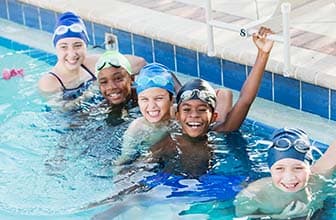Key points
- The documents linked below show support for the development and use of the MAHC from key public health and aquatic sector partners.
- These documents can be useful in educating other community partners and can serve as models for increasing MAHC engagement and adoption.

Public Health Support for the MAHC
- National Environmental Health Association (NEHA). Policy Statement: Model Aquatic Health Code 2020. NEHA recommends the integration and adoption of the Centers for Disease Control & Prevention's Model Aquatic Health Code, by state, local, tribal, and territorial government agencies, to ensure public health and safety in aquatic facilities.
- Council of State and Territorial Epidemiologists (CSTE). Support for Use of the CDC's Model Aquatic Health Code (MAHC) as a Resource and Guidance Document by State, Territorial, and Local Jurisdictions Regulating Public Aquatic Facilities 2017. The position statement endorses state, territorial, and/or local jurisdictions using CDC's Model Aquatic Health Code (MAHC) as a resource and guide when creating, revising, or updating state and local aquatic program regulations, guidance, and policy.
- National Association of County and City Health Officials (NACCHO). Recreational Water Safety 2015. NACCHO Statement of Policy calling for a renewed focus on improving recreational water safety. The statement emphasizes the importance of pool inspection and other recreational water safety activities at local health departments and specifically mentions the Model Aquatic Health Code as a tool to decrease waterborne injury and illness and promote healthy swimming.
Aquatics Sector Support for the MAHC
- Association of Aquatic Professionals (AOAP). Position Statement: Support for Evaluation and adoption of the Model Aquatic Health Code 2019. AOAP brings together professionals from all aspects of aquatics to educate, advocate, enrich, network and improve the aquatics industry across the United States and internationally. The AOAP supports the evaluation and adoption of all or part of the MAHC by state, territory, and local health departments; aquatic facilities; and the industry at large with the objective of protecting the future of aquatic facilities and their staff and patrons.
- National Swimming Pool Foundation (NSPF). Position Statement: Model Aquatic Health Code 2018. NSPF funds education, research, and helps create swimmers. NSPF urges state, territorial, and local health departments; aquatic facilities; and the industry at large to evaluate and adopt all or part of the MAHC.
- California Pool and Spa Association (CPSA) and the Pool Spa and Aquatics Alliance (The Alliance). Position Statement: Support for the MAHC with Respect to Commercial Aquatic Facilities 2018. CPSA is a trade association representing 300 businesses that design, build, service and supply pools and spas. The Alliance is a subsidiary of NSPF that raises professional standards and improves sustainability through education and promotion. The statement urges state and local health departments to adopt all, or part of, the MAHC to protect people and facilities. It also urges participation in the CMAHC process to update the MAHC.
- Commercial Energy Specialists (CES). Endorsement of CDC's Model Aquatic Health Code 2018. CES provides water treatment programs to maintain safe recreational water. CES strongly urges all manufacturers, distributors, customers, and service agents to embrace and support the MAHC as the all-inclusive guidance document for public pools.
- ChlorKing. Endorsement of CDC's Model Aquatic Health Code 2018. ChlorKing is a manufacturer of onsite chlorine generators and ultraviolet light systems for the commercial swimming pool industry. ChlorKing urges all involved in the commercial swimming pool industry to continue the shared commitment to make facilities better and safer for all.
Policy Statements and Articles that Led to the Creation of the MAHC
- CSTE and Sackett. D. A Decade after CSTE's Call to Action, a New Voluntary Model Health Code Launches. 2014. Blog article discussing the launch of the MAHC and progress made over the past decade.
